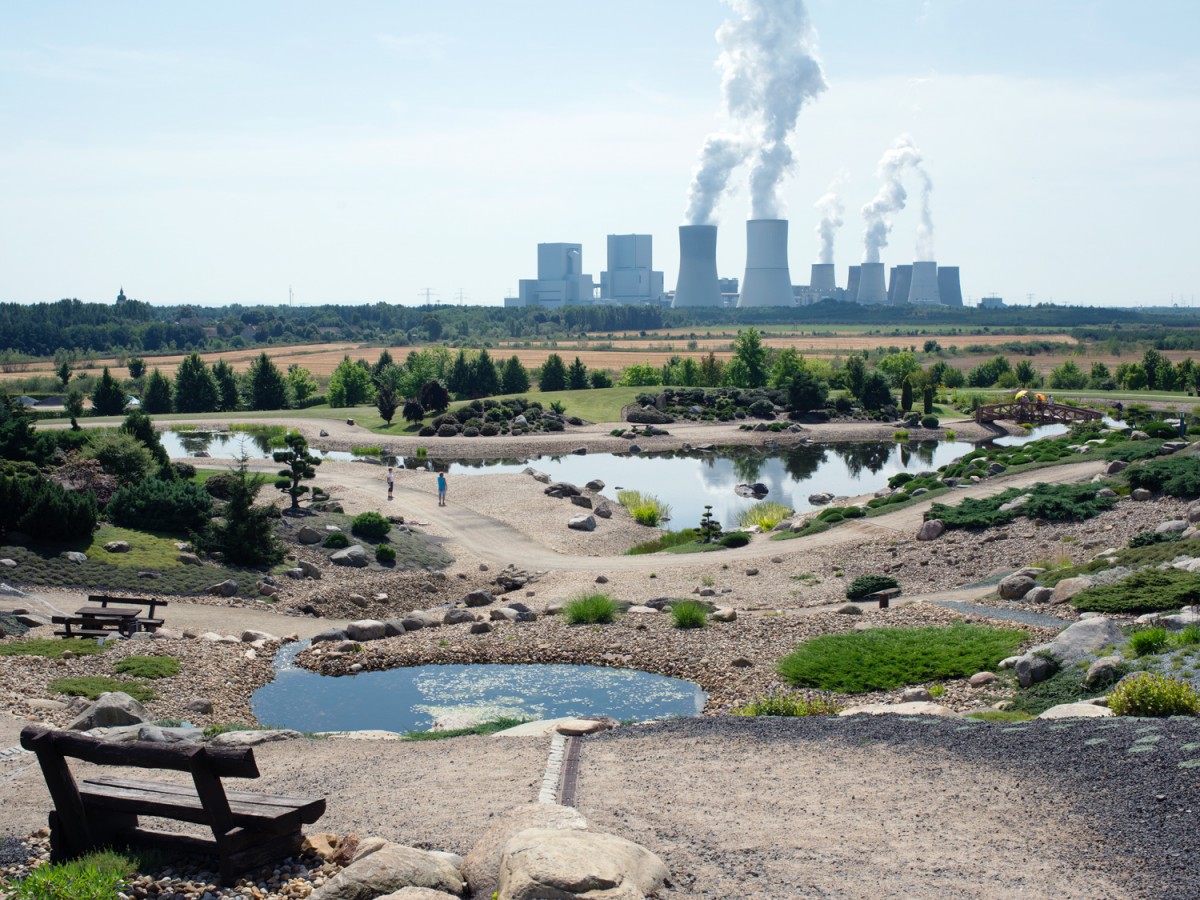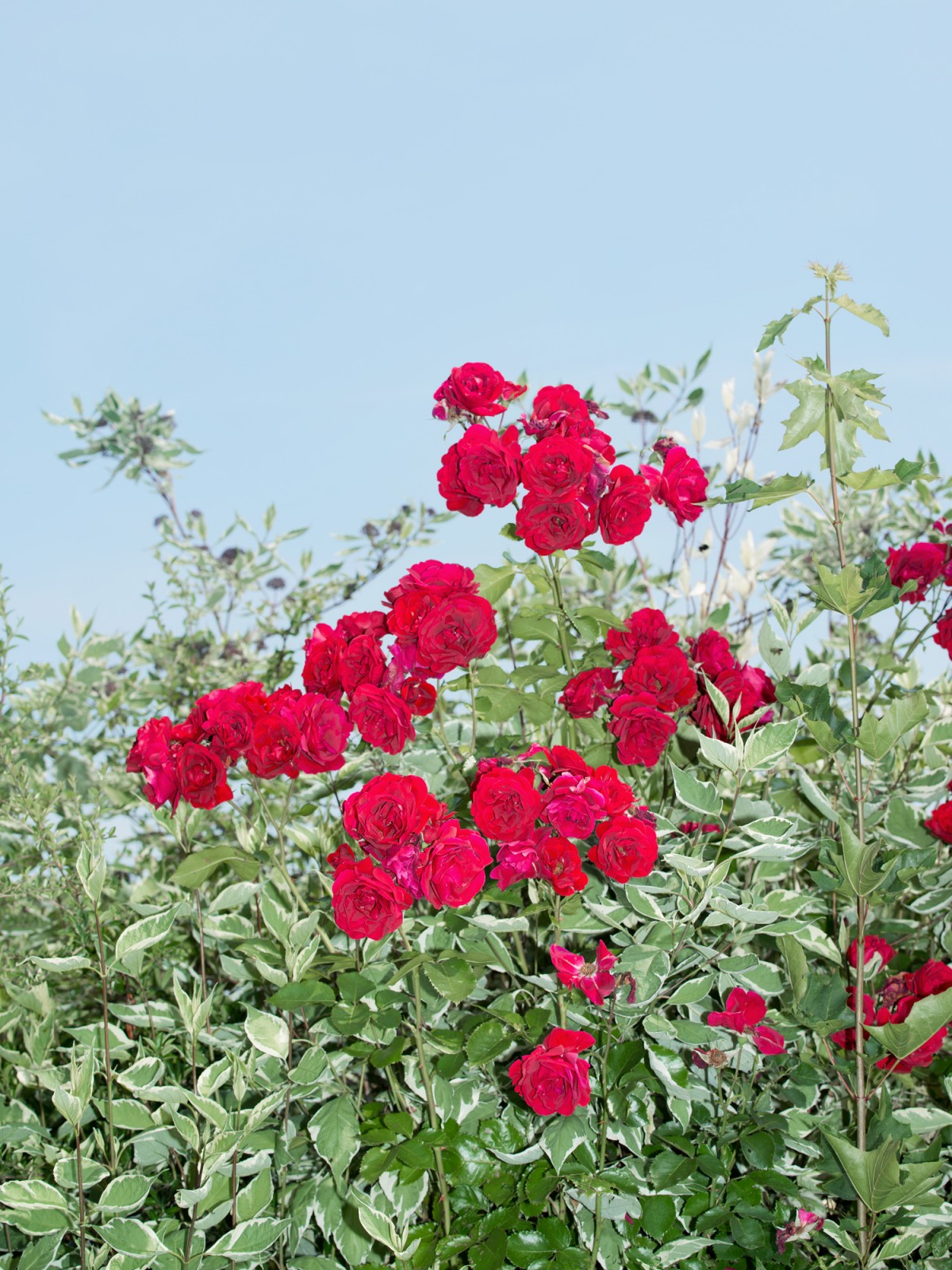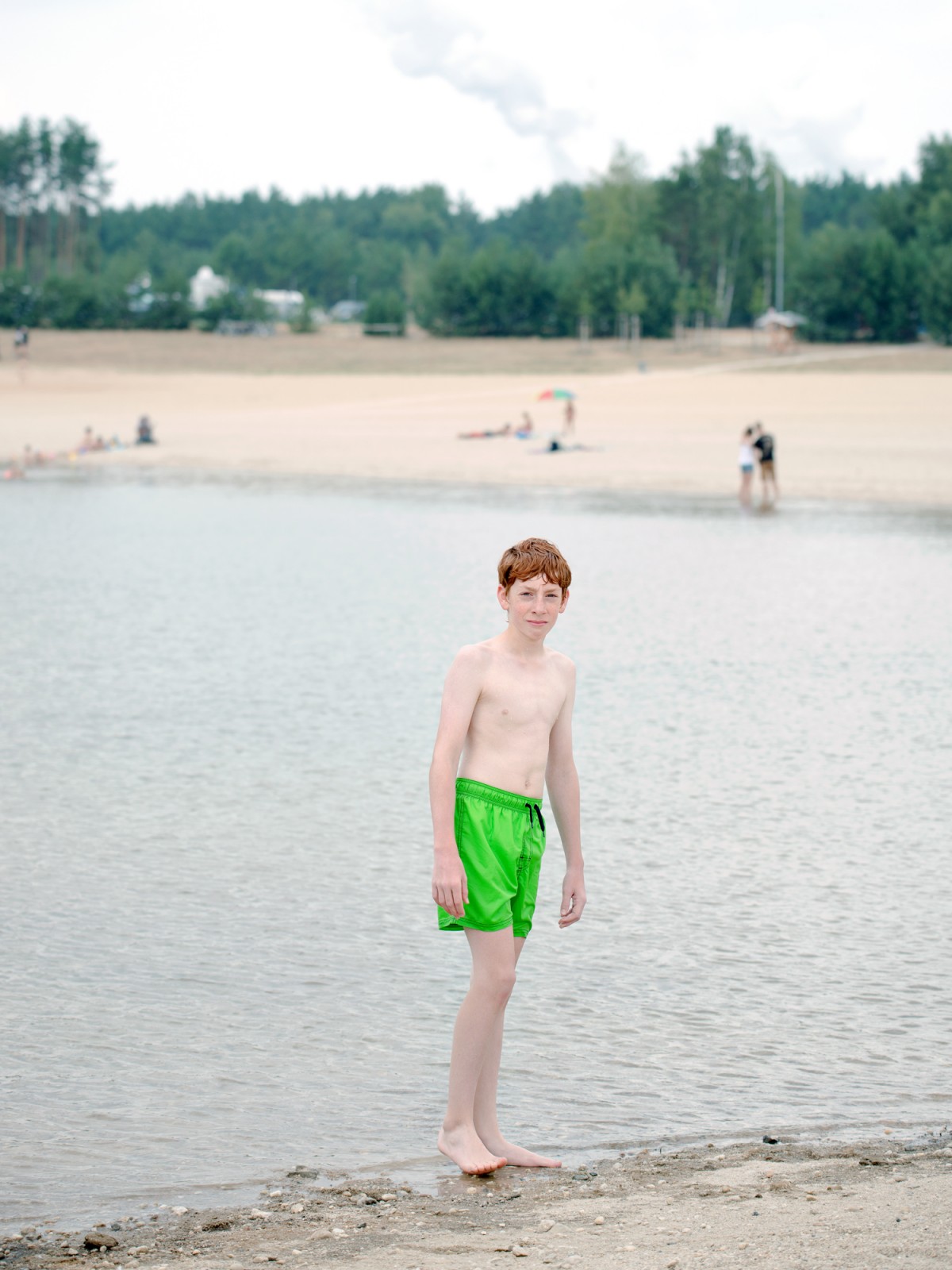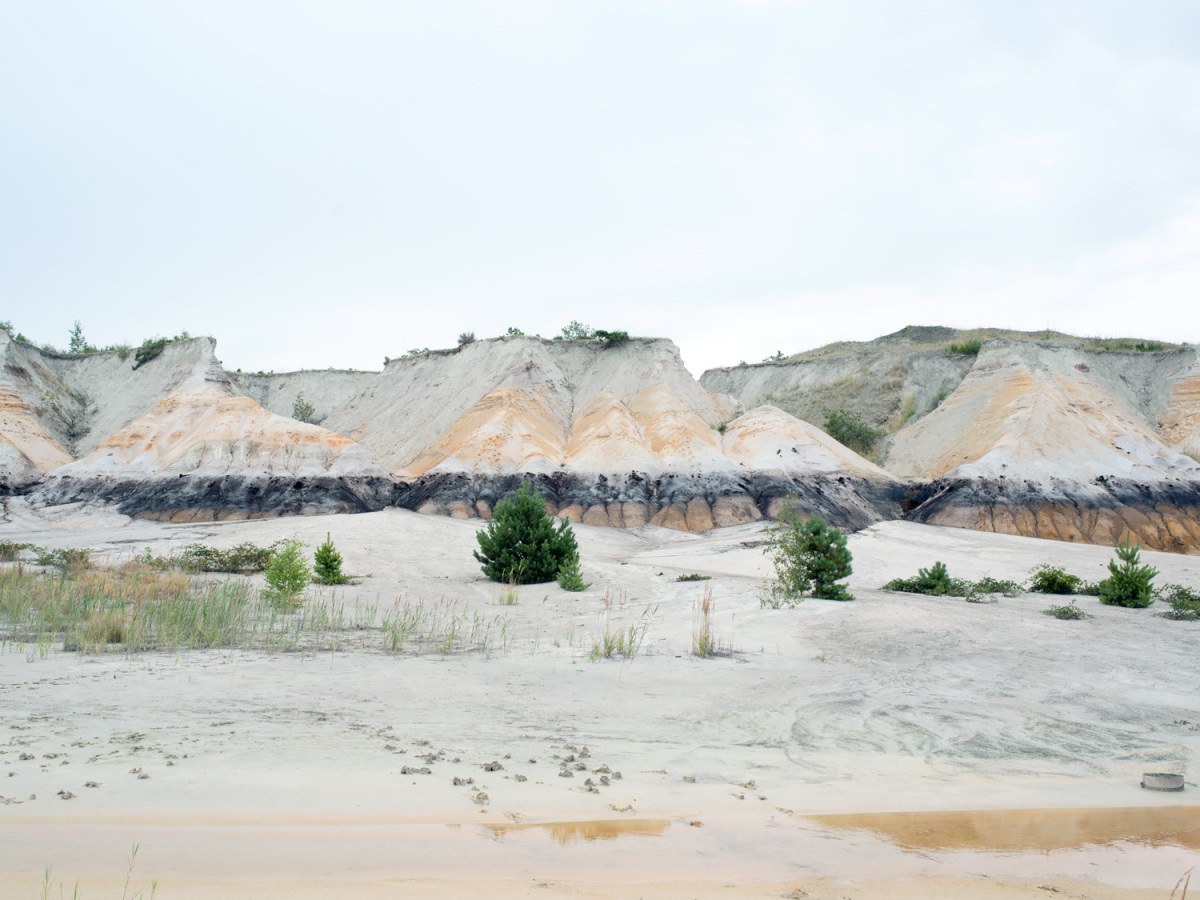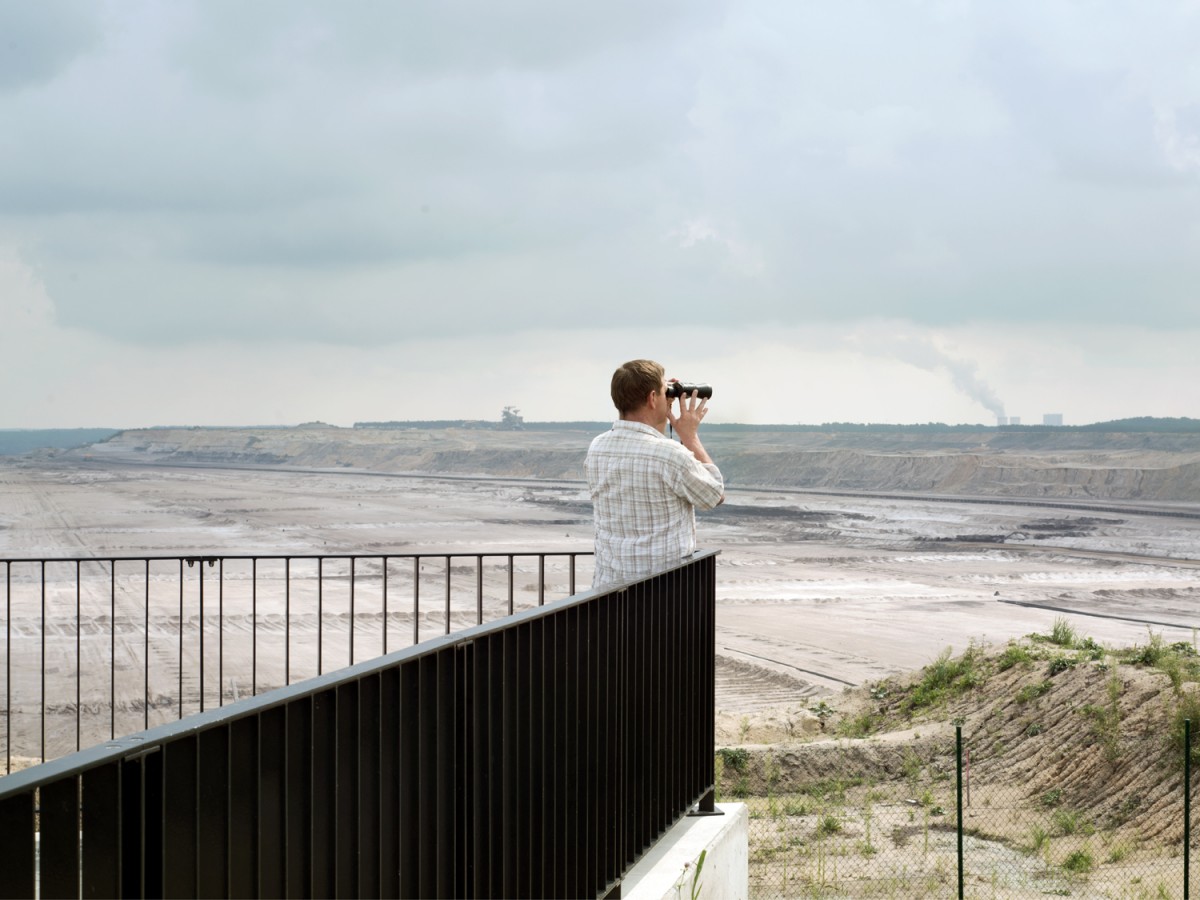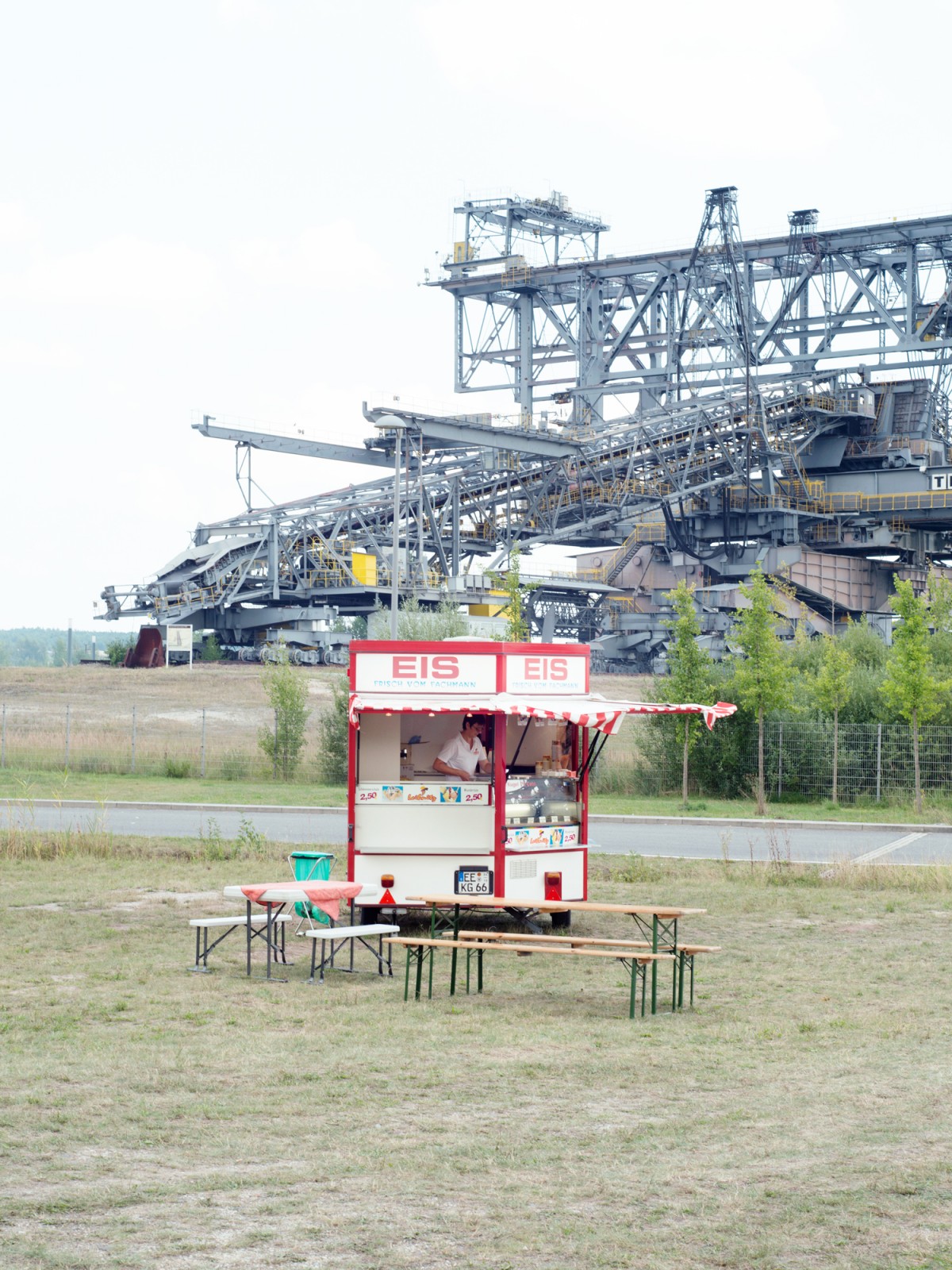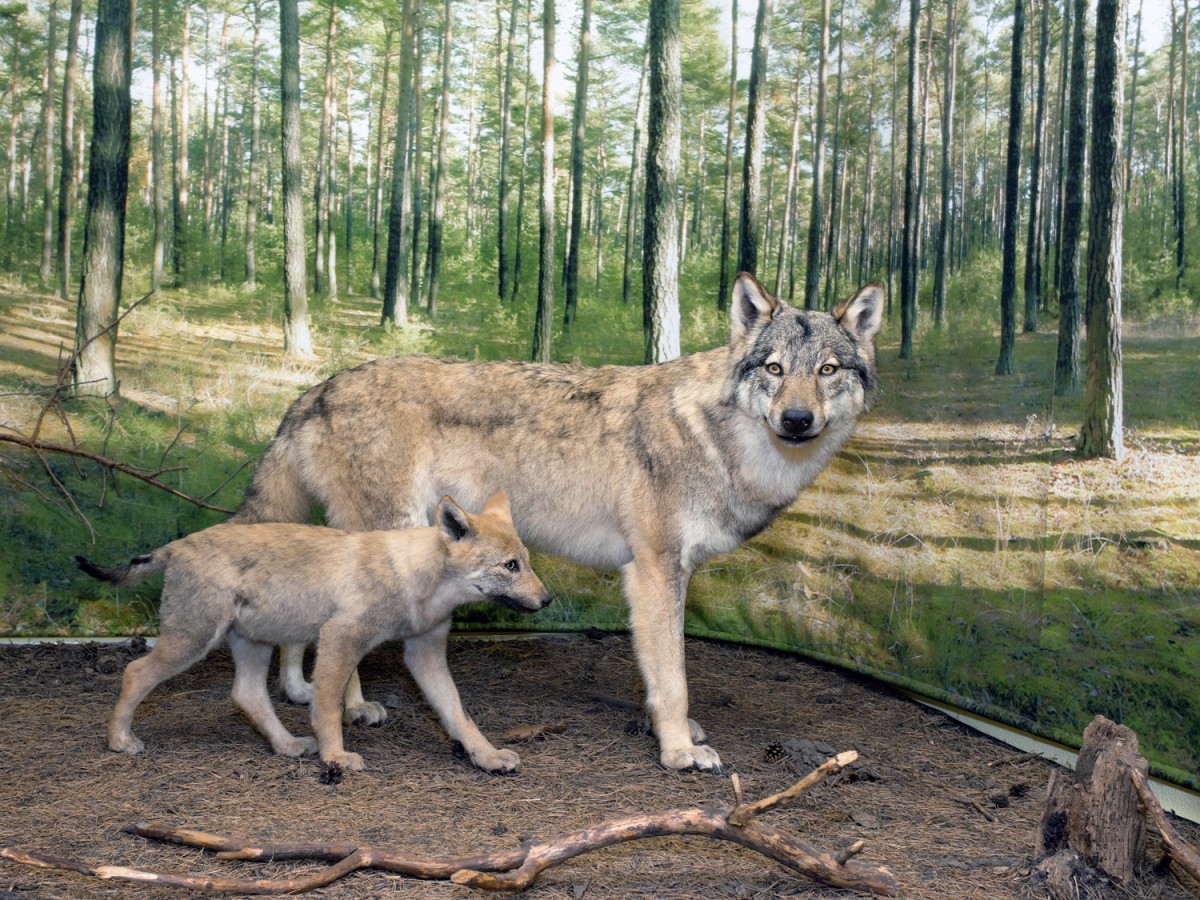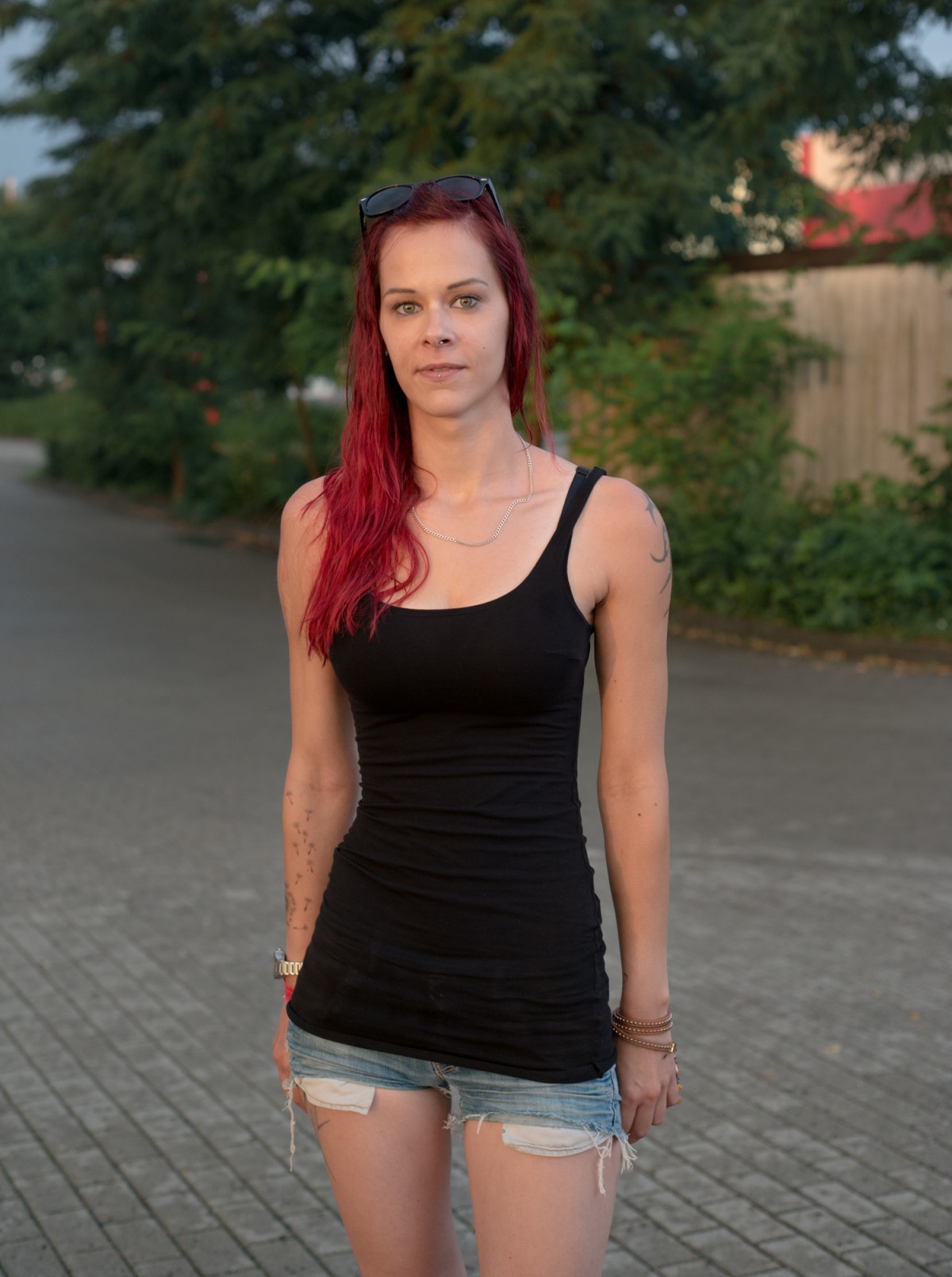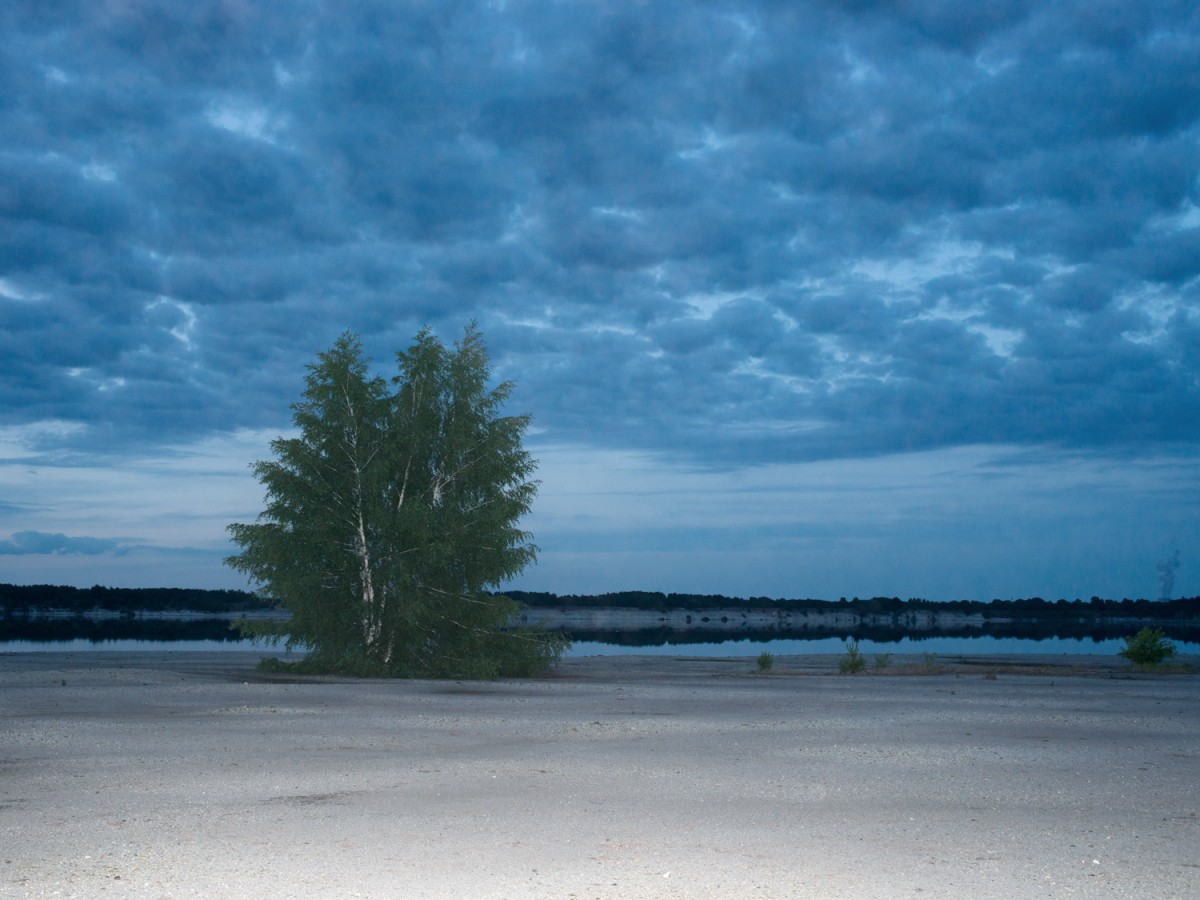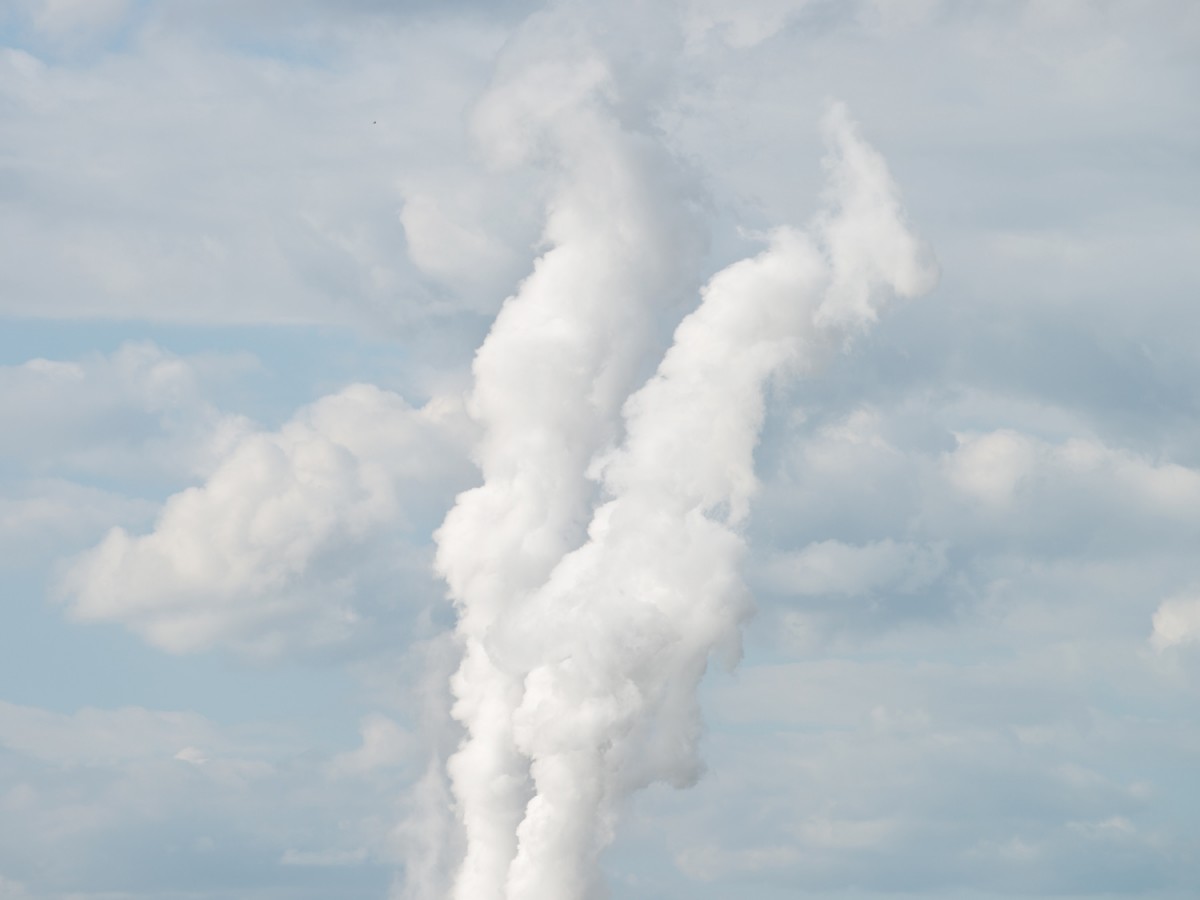We look at the work of photographer, Freya Najade and her series, Jazorina, Land of Lakes, in the lead up to the release of her publication by Kehrer Verlag, May 2016.
Under towering chimneys in a sprawling industrial landscape, a group of small lakes, pristine paths and viewing benches are improbably sited. In amongst them, the visiting tourists – for this is who they are – are reduced to mere specks; their backs turned away from us, their gaze firmly directed toward the thick shafts of smoke in the middle distance, billowing into the summer sky.


This is Lusatia, soon to become Europe’s largest artificial lake district and a holiday destination. Sited at the far Eastern edge of Germany, near its border with Poland, the region has held a firm reputation as one of the most polluted in the country. For more than a hundred years, forests were felled, meadows cleared and villages emptied to make way for vast lignite mines, which gradually decimated the area – it was said that if you hung a white shirt on a line outside your house it would have turned grey by the time you returned.
But at the beginning of the Seventies, and with renewed vigour after the country’s reunification, a number of the old pits were flooded to create a suite of artificial lakes, an initiative that continues to flourish to this day. Now, there are around ten lakes in use, with more on the way, and a fledgling tourism trade has begun re-cultivating the land.


Freya Najade became captivated by Lusatia’s quasi-industrial, partially re-engineered feel, and the measured, yet determined pace of change. Named ‘Jazorina’ for the local Lower Sorbian word for ‘land of lakes’, her photographs are silent, studied things, beautifully coloured and flushed with light. Capturing the dense layers of the region’s history, they seem to speculate on what went before, and what might come after.

Najade is the winner of several awards and has been published in The Guardian, the British Journal of Photography, The Times, and Die Zeit. Jazorina has won the Gold Award at London Offspring Photo Meet and has been nominated for the sixth Prix Pictet. (Lucy Davies)


Freya’s monograph of this series, published by Kehrer Verlag, is now on pre-sale. For more information and to pre-order the book, click here.
The book launch will be held at The Photographers’ Gallery on May 5. For more information, click here.
For more of Freya’s work click here.
For more showcases click here.
